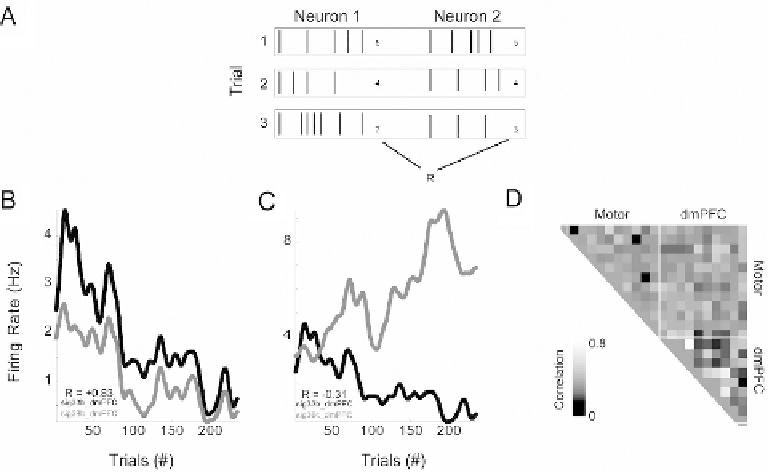Biomedical Engineering Reference
In-Depth Information
These methods demonstrate how to use simple rate correla-
tions to make inferences about functional relationships between
neurons, and demonstrate how these techniques can be applied
to simultaneous recordings from neural populations in rodent
dmPFC and motor cortex.
8. Trial-by-Trial
Rate Correlations
In essence, the JPSTH applies cross-correlation on a trial-by-trial
basis. Gawne and Richmond
(31)
proposed the same analogy for
rate correlations. This analysis is simple to calculate, as one can
compare (via correlation) the mean or the variance of activity of
two neurons over trials (
Fig. 7.7A
). To perform rate correlation,
one should:
1. Construct perievent matrices for each neuron.
2. Sum the firing rates for each trial.
3. Compute Pearson's correlation coefficient of trial-by-trial fir-
ing rates.
These steps also can be easily computed with the following
code, in which two perievent matrices are created from random
data, and a correlation coefficient is calculated.
Fig. 7.7. Trial-by-trial rate correlations. (A) This analysis simply bins neurons' firing rates over the trials, and examines
the correlation of neurons' firing rates over trials. (B) Neurons could exhibit positive or (C) negative relationships; same
neurons as in Fig. 7.6. (D) Trial-by-trial rate correlations over the ensemble (absolute value plotted - we are interested
in only the strength of correlation) reveal several groups of neurons with strong trial-by-trial correlations, particularly in
dmPFC.

